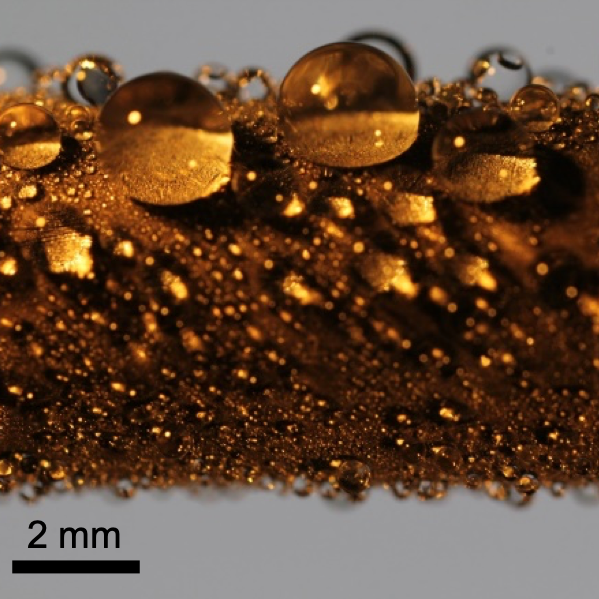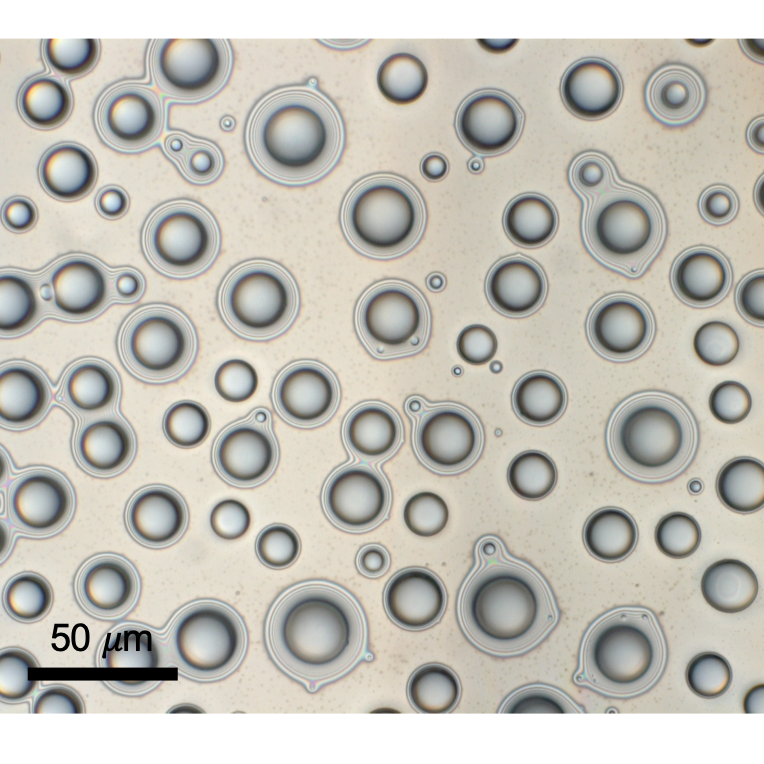State-of-the-art oil-impregnated surfaces are currently being developed for a series of applications across several industries, such as medicine, shipping, transportation, and energy. Earlier this year, the Energy Transport Laboratory (ETL), led by mechanical engineering assistant professor, Solomon Adera, published a study about how ice dendrites that form over frozen water droplets give insights into the durability of oil coatings on these advanced materials. Now, the lab has turned their sights on another process that affects this durability.
The lab’s recent paper published by Nature Communications is about droplet coalescence, which is the process of two water droplets pulling closer together along a surface and merging. This is especially important for the deployment of oil-impregnated materials in the energy sector.

“90% of global electricity is generated through the steam cycle, by cycling water from vapor to liquid,” Adera said.
In power plants, a boiler evaporates water into pressurized steam that is pumped into a turbine. Electricity is generated by extracting energy from this steam. The steam then exits the turbine and becomes a mixture of vapor and water, which is directed into a condenser.
Inside a condenser, “the remaining vapor changes phase to liquid and forms droplets on condensing surfaces, like copper tubes, and then there is interaction between the droplets,” said Adera. These droplets coalesce into larger and larger beads, until they finally fall and are redirected back into a power plant’s boiler.
The caveat is that “droplets can only fall when they reach a certain critical size, that is, when their weights overcome the surface tensions that allow them to cling to these surfaces,” said Yimin Zhou, a PhD student in Mechanical Engineering.
“By using oil-impregnated surfaces, you can facilitate this droplet shedding,” said. Adera. Oil-impregnated surfaces are highly slippery, which means droplets slide away easily on them. This results in a faster shedding that would improve the overall cycle efficiency of power plants.
“The problem is that, compared to conventional surfaces, droplet coalescence on oil-impregnated surfaces is different,” said Haobo Xu, a recent alumni of U-M Mechanical Engineering and first author on the ETL’s paper.

As of now, droplet coalescence on these advanced surfaces is not well understood. “We researched and found that there was no paper describing the whole process,” Haobo said.
To address this, the Energy Transport Laboratory’s research team worked to model what they determined are the three stages that constitute droplet coalescence on oil-impregnated surfaces: attraction, oil drainage, and merging. Moving through each stage, the team examined and determined the several factors at play.
To begin, Haobo said, “we placed two millimeter-sized droplets on a lubricated surface, and we used a very small capillary tube to move one droplet close to the other one. Once these two droplets get very close, they will attract each other.”
Through this first phase, attraction, the team used a high-speed camera and a geometric model to examine how the horizontal velocity of the two droplets’ attraction developed a vertical velocity in a layer of oil that gathered between them. This oil layer “delays the two droplets merging into one,” said Haobo.
This begins phase two, oil drainage, in which the two droplets continue to pull closer together, while the intervening oil layer, having nowhere to go, squeezes out from in between. Notably, the team “found that the thickness of the oil layer affects the time it takes for this process to happen,” Haobo said, “but once the oil layer drains to a certain thinness, then the oil layer will burst.”
The two droplets then move into the final phase, dubbed merging, by combining into one larger bead. Here, the team used an analogy with the damped mass-spring system to model the deformation and oscillation of the combined droplet. The three-stage process then culminates with a single large droplet slowly coming to rest.
In the long run, the Energy Transport Laboratory is interested in how this process affects the durability of oil-impregnated materials. “We are interested in understanding how condensate droplets deplete the lubricant oil during departure,” said Adera. “That will enable us to devise strategies to reduce (and potentially eliminate) oil depletion during condensation using slippery surfaces.”
You can read the Energy Transport Laboratory’s paper, titled “Droplet attraction and coalescence mechanism on textured oil-impregnated surfaces,” in Nature Communications.
